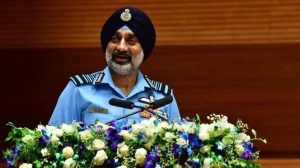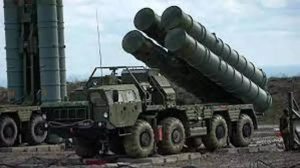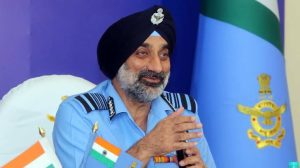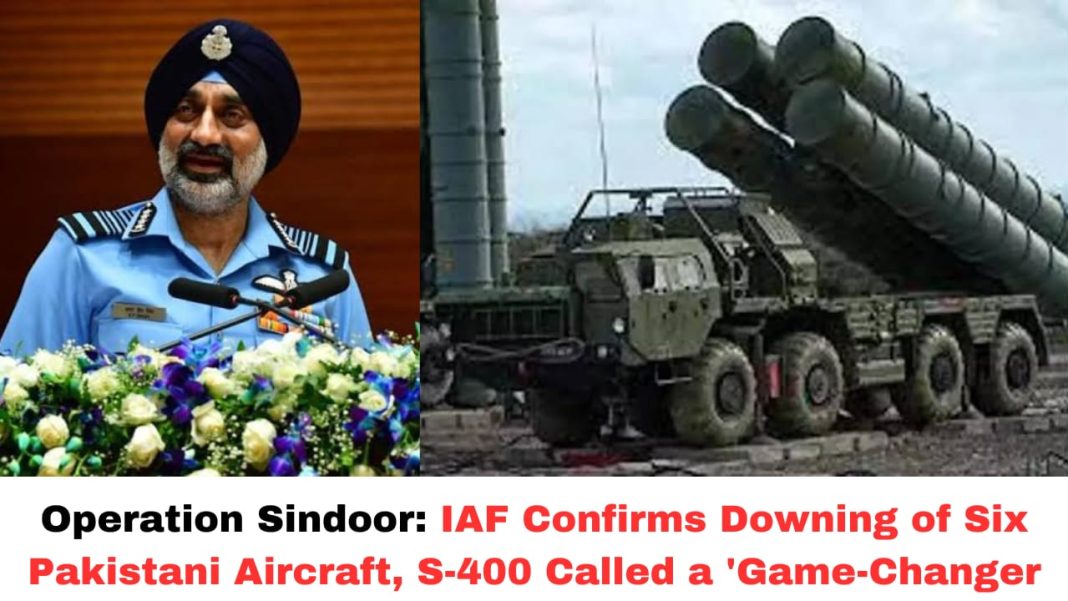Digital News Guru National Desk:
IAF Chief’s Historic Disclosure: Six Pakistani Aircraft Downed in May Clashes
In a noteworthy public revelation, Air Chief Marshal A. P. Singh—Chief of the Indian Air Force (IAF)—confirmed that during Operation Sindoor in early May, Indian air defences successfully downed six Pakistani military aircraft. The tally includes five fighter jets and one larger airborne surveillance aircraft, potentially an ELINT or AEW&C platform. This marks the first official confirmation from India regarding the extent of Pakistani losses in the conflict.

A Record-Breaking Strike
The surveillance aircraft was taken out at an astounding distance of about 300 km, which ACM Singh described as the “largest ever recorded surface-to-air kill”. Most of the aircraft were neutralized using the Russian-made S-400 Triumf air defence system, which the chief lauded as a “game-changer” for its long-range precision.
Beyond the Sky: Ground Targets Hit
ACM Singh elaborated that the operation targeted multiple strategic military installations deep inside Pakistani airspace. These included:
- Command-and-control centers in Murid and Chaklala,
- At least six radar installations,
- SAGW (Surface-to-Air Guided Weapon) systems in Lahore and Okara,
- Hangars at Sukkur (UAV), Bholari (AEW&C), and Jacobabad (F-16) airbases, where satellite imagery indicates significant structural damage.
The Jacobabad hangar, specifically, suffered partial destruction, possibly damaging F-16 fighters inside, while an AEW&C aircraft was likely destroyed at Bholari.
Operation Sindoor: A Coordinated Strike
Operative from May 7 to May 10, the air action was conducted with high precision, targeting nine militant setups, including camps linked to Jaish-e-Mohammad and Lashkar-e-Taiba. Reports confirm that more than 100 terrorists were neutralized. Following these strikes, Pakistan sought a ceasefire by contacting India’s DGMO.
In addition, around that time, India conducted nationwide civil defence readiness exercises (Operation Abhyaas), highlighting the broader security context.
Reactions and Political Fallout
Pakistan’s Defence Minister has forcefully rejected India’s claims, calling for an independent verification and criticizing India for allegedly leveraging the narrative for political gain.
Domestically, opposition figures—particularly Congress—have demanded greater transparency, expressing shock that such a pivotal military success was not communicated sooner.

Strategy, Technology, and Morale
ACM Singh underscored three contributing factors behind the operation’s success: clear political will, unrestricted planning, and operational autonomy. He also referenced lessons learned from Operation Balakot in 2019, noting that this time, results were clear and verifiable—with minimal collateral damage.
Defense analysts believe that the precision strikes and the psychological impact of long-range capabilities have delivered a strong deterrent message. Chief of Defence Staff General Anil Chauhan recently commented that Operation Sindoor had a significant psychological impact on Pakistan, reinforcing the broader impact of the campaign beyond tactical gains.
Key Highlights
- Confirmed Shoot-Downs: Indian Air Chief Marshal A.P. Singh has stated that during the clashes in May 2025—known as Operation Sindoor—the Indian Air Force (IAF) downed six Pakistani military aircraft, comprising five fighter jets and one larger aircraft, likely a surveillance or AEW&C plane. This marks India’s first official recognition of enemy air losses in the conflict.
- Historic Shot: The IAF chief emphasized that the large aircraft was taken down from a staggering distance of approximately 300 km, claiming it to be the longest recorded surface-to-air kill to date.
- Advanced Defense Capability: The majority of these downings were achieved using India’s Russian-made S-400 surface-to-air missile system, which the IAF chief described as a “game-changer” in terms of air defense effectiveness.
- Pakistan’s Response: Pakistan has rejected these claims, stating that no Pakistani aircraft were destroyed. Its Defence Minister has called for independent verification, accusing India of political theatrics.
- Political Fallout: The disclosure has sparked significant political debate within India—particularly from the opposition, with Congress demanding greater transparency and questioning why such critical information wasn’t disclosed earlier.
What’s Next?
Even after the ceasefire came into effect on May 10, drone intrusions and LoC violations continued, reflecting persistent tensions and the strategic scale of the confrontation.
India continues to emphasize precision and restraint, while indications are that both parties may be preparing for sustained standoffs unless diplomatic efforts prevail.

Final Thoughts
Operation Sindoor illustrates a turning point in India’s strategic posturing, marked by technological precision and political clarity. The use of the S-400 missile system and comprehensive targeting of Pakistan’s air defense infrastructure showcased a significant leap in India’s military readiness.
Yet, this military narrative carries political crosscurrents—both domestically and internationally. Pakistan’s denial, demands for verification, and India’s push for narrative control reveal how modern warfare today is not only fought in skies but also in media and politics.
As both nations tread a delicate line, the world awaits the aftermath—whether this military assertion will pave way for deterrence or further provoke escalation in one of the world’s most volatile flashpoints.
You May Also Read: Bollywood’s Raksha Bandhan 2025: From Akshay to Ahaan, Bollywood Stars Share Rakhi Stories and Memories








